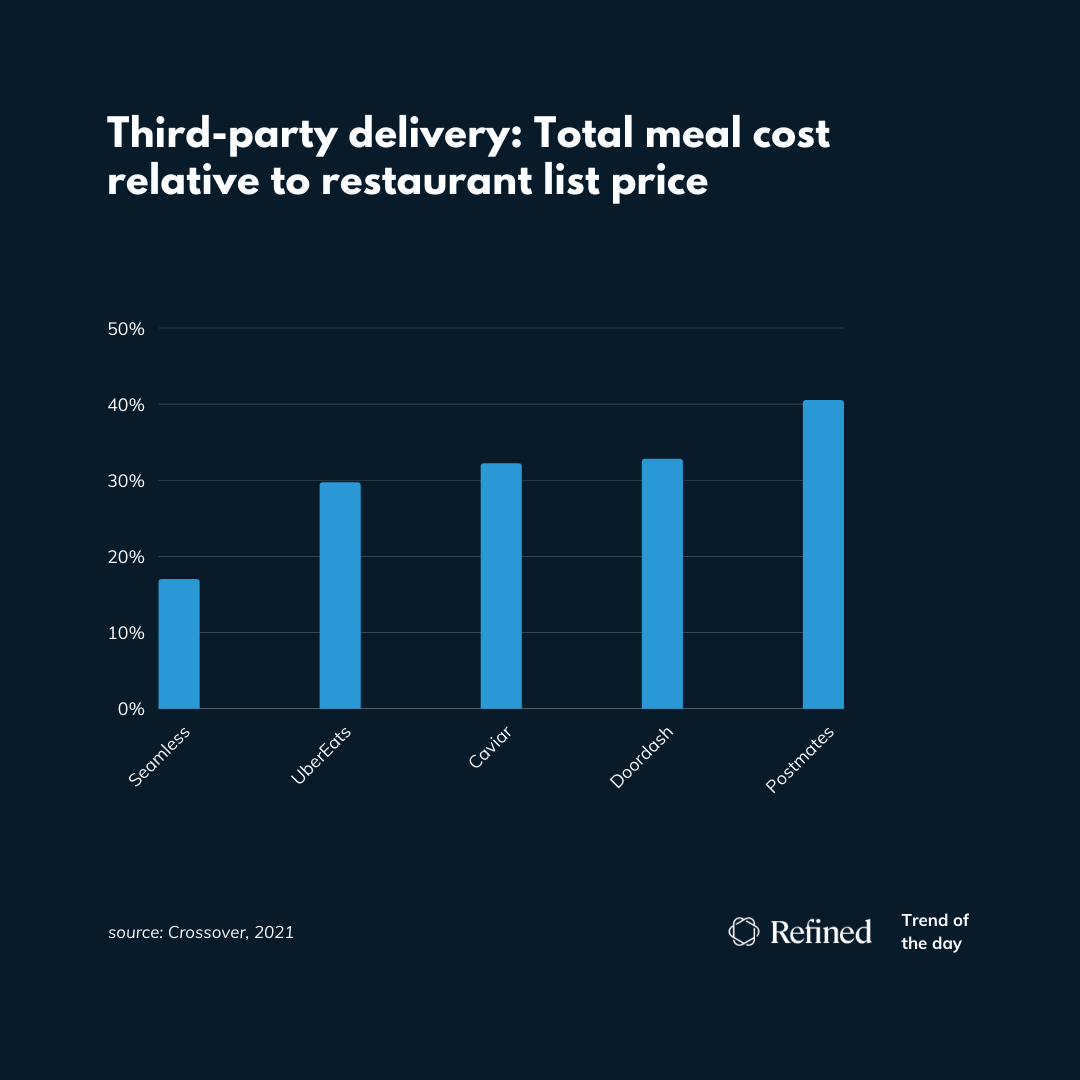.png)
The growing consensus among many restauranteurs and retailers is that third-party delivery services are not the long-term solution for food delivery. Exorbitant fees, late deliveries, and food safety concerns are all factors that can potentially detract from the convenience of these services. In this article, we'll take a look at the economics and hurdles of drone delivery.
Food delivery phone apps like Seamless, UberEats, Caviar, DoorDash, and Postmates can charge markups ranging from 17% to 40.5%, squeezing an industry already afflicted by historically tight profit margins. Peak hours and markets with a lower supply of drivers can cause wait times to consistently exceed expectations. Restaurants using these third-party delivery services lose possession of the food before the customer receives it, which can cause all types of concerns about food safety. Because these delivery services do not fall under the umbrella of local health departments, they can lead to a gap in food security that has yet to be addressed. Could drone delivery be the solution to all these problems?

Switching from a car and driver-based delivery model to driverless drone technology would bring down costs and increase efficiency in multiple ways. Drone technology not only eliminates the need for driver commissions, but also saves consumers any tipping they might otherwise feel inclined to give. The cost of the delivery vehicle itself is significantly cheaper than an automobile. A popular drone, the DJI Wings S1000+ has the ability to carry up to 15 pounds, a flight range of 5 to 7 miles, and is currently selling for approximately $4,400. Drones like this model can remove a restauranteur's or retailer's need for an expensive commercial automobile insurance policy. Drones can also help solve some common problems related to pickup and delivery, including difficulties associated with late drivers and the loss of food possession.
Regulations
Beginning in 2017, the FAA began the Unmanned Aircraft System Integration Pilot Program, which joined public sectors including state and local governments together with private sector entities to test and evaluate the integration of drone operations for commercial use. Their specific goals included identifying ways to balance local and national interests related to drone integration, improving communications with jurisdictions, and addressing security and privacy risks. This program concluded on October 25, 2020 having successfully met their goals. The following day, the FAA launched the next chapter in the development of commercial drone use with BEYOND. Their new challenge areas to overcome were identified as beyond visual line of sight operations that are repeatable, scalable and economically viable with specific emphasis on infrastructure inspection, public operations and small package delivery. They are also focusing on community engagement efforts to collect, analyze and address community concerns.
Outlook
While there are still major hurdles including legal issues to overcome before drone delivery can become a reality, the groundwork is being laid. The technology for drone delivery now exists, but it has yet to be seen whether it will be embraced by businesses and consumers alike. As it looks promising, the economic impact of drone delivery would be significant and far reaching not only to restaurants, but e-commerce players, package delivery companies, and ultimately, the economy as a whole.